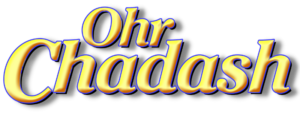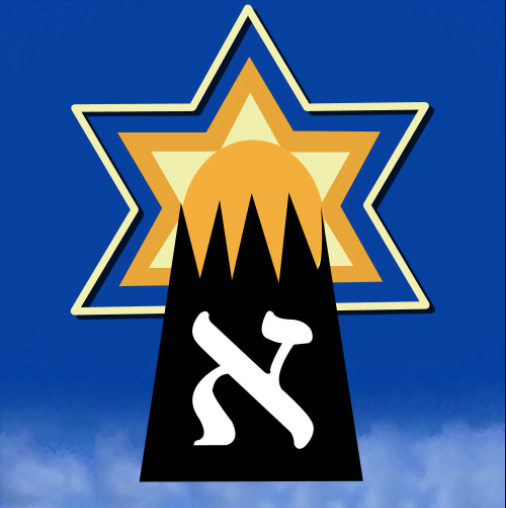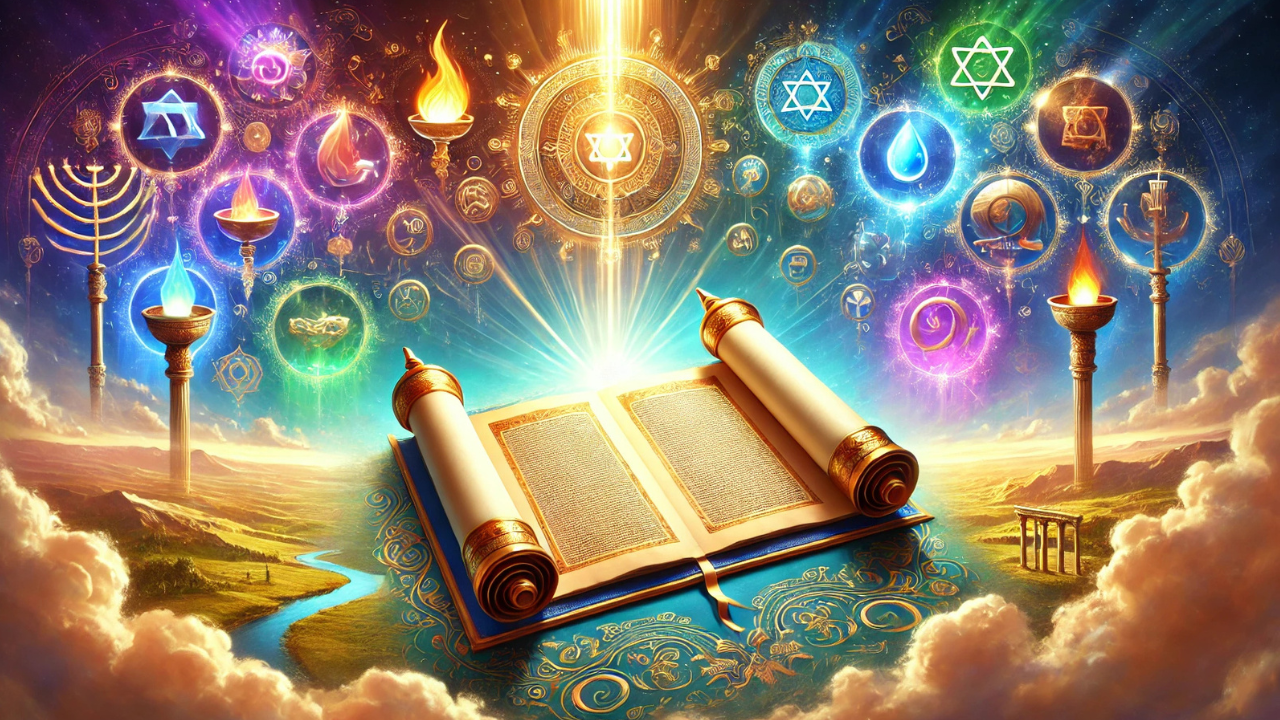Juxtapositions
From time immemorial commentators have wondered about the juxtaposition of the contents in many Torah portions. Some portions follow entirely logical arrangements, whether chronological, if a story is being told, or thematic, if particular laws are being taught; however, many other portions consist of a wide range of material with no obvious connection. Rashi often comments either on the juxtaposition within a given portion or on the link between one portion and another.
This week’s Torah portion concludes with a detailed review of all the communal sacrifices offered in the Tabernacle and the Temples. It begins by reviewing the daily, Shabbat, and New Moon offerings, and then continues with an overview of the cycle of the yearly holidays and their appropriate sacrifices. This sudden and detailed review is surprising on two levels: Why does the Torah discuss these sacrificial laws here (wouldn’t Leviticus have been more appropriate)? And, why does the Torah review the cycle of the holidays, given that they have already been addressed in the portions of Mishpatim and Emor?
The incident immediately preceding this one concerns the transfer of power from Moses to Joshua. God begins by reminding Moses he will not lead the Jewish people into the Land of Israel, and Moses responds by requesting that God appoint a leader in his stead “who may go out before them and who may come in before them and who may lead them in; so that the congregation of God will not be like a flock that has no shepherd” (Numbers 27:17). God tells Moses to publicly lay his hands on Joshua’s head to signify the transfer of authority. This process of transferring authority became known as semichah (literally, the laying on of hands) and even today is the official Hebrew term for rabbinic ordination.
Although Moses was obviously not telling God what to do, the wording he chose – “Let God…” (Numbers 27:16) – could be construed as a command. Indeed, Rashi, alluding to Moses’ imperative tone, cites the following Midrash: “The Holy One Blessed Is He said to him: ‘Instead of giving Me a command regarding My children, command My children regarding Me!’” (Rashi on Numbers 28:2). In addition to responding somewhat ironically to Moses commanding God, the Midrash also implicitly provides an answer for the juxtaposition of the section regarding offerings to this one. In response to Moses’ somewhat commanding tone, God instructs the people to bring offerings. However, this does not explain why God gave this particular command now. Consequently, we need to search for a deeper connection between the two sections.
One aspect both semichah and the offerings share is the idea of cycles and circles. The word “semichah” begins with the letter samech and both words – “semichah” and “samech” – have the same root letters. The samech is shaped like a circle and many of the words that contain a samech are in some way related to the notion of coming full circle. In this case, Moses’ life is almost over and he has almost completed his mission; Joshua’s appointment represents the changing of the guard and the beginning of a new historic cycle. In fact, the next portion of Mattot begins with Moses speaking to the heads of the tribes, another indication that that the torch is being passed on. Similarly, the daily, weekly, monthly, and yearly holiday offerings also fundamentally fulfill the concept of coming full circle, of completing a cycle.
The notion of circles and cycles at the end of the portion is intrinsically connected to the symbolism inherent in three straight lines we discussed earlier in the portion: Pinchas’ romach (spear), the word shalom’s broken letter vav, and the unusually large final nun in “mishpatan” (in the case of the daughter’s of Zelophehad). However, to understand how these circles and lines relate, we must first digress and explore several Kabbalistic concepts.
The relationship between circles and lines in fact appears in several fundamental Kabbalistic concepts. To begin with, the very act of creation is predicated on God contracting His infinite presence to leave, as it were, an empty vacuum where finite worlds could be created. This vacuum is conceptually envisioned as a circle. Into this circular space God caused a singular line or ray of light to enter from which all worlds, physical and spiritual, would evolve. (For a more detailed explanation of this process, see “The Small Alef of Vaikra” above, and The Mystical Nature of Light, pp. 59-60.)
Another important set of Kabbalistic concepts that utilize the relationship between circles and lines are the two basic models for the arrangement of the sefirot as either concentric circles, one within another, or as three vertical lines. The sefirot in the previous primordial World of Tohu (World of Chaos) are in general associated with the construct of concentric circles. These were the sefirot that broke in the cataclysmic “breaking of the vessels.” In our World of Rectification, which is still in the process, as it were, of “picking up the pieces,” the sefirot are now associated with the shape of our present sefirotic model – three vertical lines.
In these two Kabbalistic paradigms, the circle precedes the line and therefore the line symbolizes a more “mature” developmental stage. Despite this understanding, the World of Tohu is not to be viewed negatively. There was nothing intrinsically wrong with the light of tohu; rather, since its vessels were not mature enough to hold that world’s powerful light, they broke.
A third Kabbalistic concept that reflects the relationship between circles and lines is the comparison between the transcendent and immanent natures of God. On the one hand, God transcends time and space and any description whatsoever, while, on the other hand, He is ever-present and immanent in every aspect of reality. God in His transcendent role is referred to as Sovev Kal Olmin ([The One Who] Surrounds All Worlds). Note that the word “sovev” begins with the letter samech. God, in His immanent role, is referred to as Malei Kol Olmin, ([The One Who] Fills All Worlds). Once again, the images associated with these concepts are of God, as it were, either encircling all worlds (Sovev Kal Olmin) or of His entering into all worlds in the shape of a line descending from above to below (Malei Kol Olmin).
Having placed the relationship between circles and lines in a Kabbalistic context, we can now return to our original question about why the subject of communal offerings and the holiday cycle appear in this portion, and show how this relates to the three lines at the beginning of the portion. We must emphasize that while the daily, weekly, monthly, and yearly cycles of time encoded in the Jewish calendar form the parameters of a Jew’s life, this World of Rectification is ultimately symbolized by the straight lines of the sefirot. Our inability to achieve genuine peace in this world (symbolized by the broken vav), and the existential constraints of present reality (symbolized by the lines) necessitate our connection to the higher, more transcendent light, represented by circles, so that we can elevate both ourselves and creation. The ongoing service of God in the Temple and especially the experience of Shabbat and the holidays connect us to a higher light, a more spiritual essence.
Indeed, we should note that the last letter in Pinchas’ name is a samech. Even though Pinchas used a romach – a spear, symbolizing a line – he was in fact drawing the source of his energy from a higher imperative, from the surrounding light of his love for the people (as discussed above in “Chariots of God”). By asking and receiving Moses’ permission to act, we might add that he also received Moses’ surrounding light as well.
The Lubavitcher Rebbe, Menachem Mendel Schneerson, explained that in order to bring Mashiach we must fill the vessels of this world, the vessels of rectification, with the more ethereal, spiritual light of the primordial World of Tohu. In doing so, we will heal and rectify two cosmic problems. We will heal the problem of light that is too powerful entering vessels that are not strong enough, which originally lead to the “breaking of the vessels,” and we will rectify the present reality of strong vessels that do not contain enough light. Our contemporary situation, wherein strong vessels are not filled with enough light, is reflected in the overemphasis on materialism that pervades contemporary societies all over the world, at the expense of morals, ethics, and spiritual development.
We can further connect these ideas to that of semichah, the transfer of rabbinic authority mentioned above. Although today rabbinic ordination is often far more impersonal than in ancient times, the very notion of a teacher laying hands on his student testifies that the student has not only learned the material required to qualify as a rabbi but, even more profoundly, is a worthy receptacle for his master’s surrounding light, that is, his overall philosophy of Torah and life. Symbolically, the master places his hands on the student’s head to figuratively pass on this light as he physically and figuratively envelops the student with his philosophy. This surrounding light is indispensable to the student’s ability to translate his master’s general overriding principles into the daily practicalities of life and the practice of mitzvot.
When Moses asks God to appoint a leader he addresses him as “God of the spirits of all flesh.” God answers by saying: “Take for yourself, Joshua son of Nun, a man in whom there is spirit” (Numbers 27:15-18). Rashi explains that the phrase “in whom there is spirit” means that Joshua was able to directly relate to the unique spirit found in each and every person. God is, in effect, fulfilling Moses’ exact request by providing a leader who will be, as it were, like God, able to relate to “the spirits of all flesh.” Joshua is graced not only with keen insight but also with the ability to relate to and communicate with others. His appointment is certainly a rectification of the breakdown of communications that lead Pinchas to kill Zimri (see “A Covenant of Peace” above).
The meaning of the word “mitzvah” is commandment, but on a deeper level the root of the word means “to connect.” Each mitzvah in a sense helps heal the broken vav in this portion and each time we experience Shabbat and the holidays we connect to a more transcendental reality. At present the world lacks the vessels necessary to experience Shabbat during the six weekdays, represented by the vav, the straight line whose numerical value is six. However at the End of Days, in the seventh millennium, when the cycle of history comes full circle, we will experience each day as being “all Shabbat.” At that time the lights of tohu will be fully integrated into the vessels of rectification.







